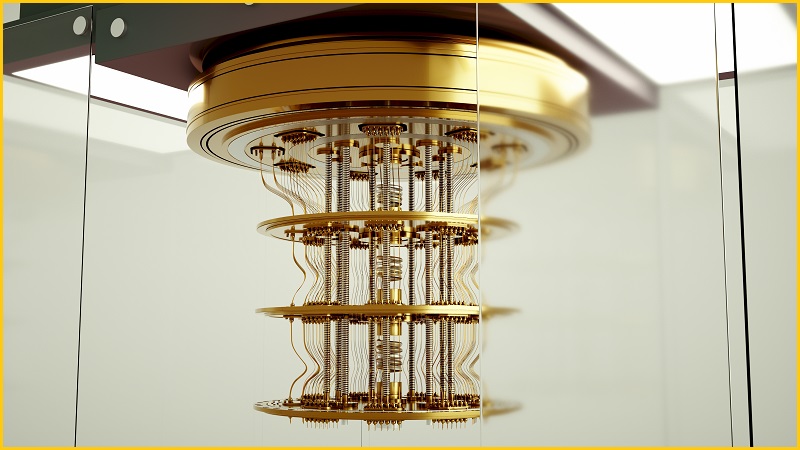Research from the University of New South Wales (UNSW) has shown a method that dramatically reduces the error rate when quantum computers boot up, making the results of their calculations significantly more reliable.
“When you want to do a quantum computation, it consists of three stages,” Professor Andrea Morello, who leads the UNSW research team, told Information Age.
“You have to first initialise the register. Normally you want each qubit to be at zero, so you start with a blank state.
“Then you encode your bits and do your operations. And at the end you measure.”
There are various proposed types of qubits – quantum bits – each of which has its own technical challenges and benefits.
Professor Morello and his team are researching electron spin qubits in elements like silicon, the semiconductor commonly used in modern electronics.
He said there has long been a “dirty little secret” in the global community of scientists and engineers studying this form of quantum computing, namely that the first stage of this type of quantum computation carries a large error rate of around 10-20 per cent.
That is, when initialising all the qubits into a zero state, there is a significant chance they will not all be in a zero state.
“It’s like if you’re trying to calculate ‘2+2’ but instead of typing ‘2’ into your calculator you type ‘7’,” Professor Morello said.
“Because you started with the wrong number, you get the wrong answer.
“Resetting, starting from a known code on a quantum computer, is actually one of the most error-prone operations we have to do.”
20 per cent chance of error
Dr Mark Johnson, lead author on a paper published last month in Physics Review X, said the problem stems from the imperfect way electrons in the silicon are cooled to near absolute zero and “relax to the low-energy ‘zero’ state”.
“Unfortunately, even using the most powerful refrigerators, we still had a 20 per cent chance of preparing the electron in the ‘one’ state by mistake,” he said.
“That was not acceptable, we had to do better than that.”
The solution the UNSW team has come up with involves watching in real-time, using a fast electronic instrument, each electron captured on a phosphorous atom to see if it has the low energy of a down-pointing ‘zero’ qubit.
Using principles of Bayesian inference, if the instrument sees an electron bound to the phosphorous atom for at least 1-2 milliseconds, it is highly likely that it is the low energy state, down-pointing state of a zero qubit.
Those qubits get captured and can then be operated on with 99 per cent confidence that they are in a zero state.
It’s a method that bares a striking resemblance to a 19th century thought experiment called ‘Maxwell’s demon’ which demonstrates a hypothetical way to violate the laws of thermodynamics.
In the thought experiment, a fictional demon watches over a chamber of gas while operating a discrete gate that separates the chamber’s two halves.
Whenever the demon sees slow-moving gas molecules heading toward the gate, it opens them up and captures them on one side, while deliberately blocking the fast-moving gas molecules from reaching that chamber, sorting the hot from the cold gas in a way nature – via the laws of thermodynamics – would never do.
Building to scale
Scaling quantum computers to hold large numbers of qubits is the secret to unlocking their computational power. A scalable solution to the initialisation problem will go a long way to making larger quantum systems viable.
“We first demonstrated it on one qubit, and now we have a three-qubit experiment it works with,” he told Information Age.
“It’s completely universal – once we have a billion qubits we will still use it.
“This is just one component of a universally necessary operation, which is to initialise the qubit in the zero state.”
Australian researchers like those at UNSW are leading the way in quantum computing advancement, with teams regularly making breakthroughs on different areas of the emerging technology.
Last year the University of Sydney’s Microsoft Quantum Laboratories produced a CMOS chip to help control large numbers of qubits in a way that isolates controls from the heat and noise that leads to decoherence in qubits.
There was also a University of Sydney undergraduate student whose method of quantum error correction was folded into the quantum computing development of Amazon Web Services (AWS).
And in June we saw the Pawsey Supercomputing Centre add a small room-temperature quantum accelerator to its supercomputer cluster in order to test hybrid quantum computing options.
National science agency CSIRO estimates quantum technologies could be a $6 billion industry by 2045 and may create 19,400 jobs.
The government is preparing a national quantum strategy to support local research and development.










